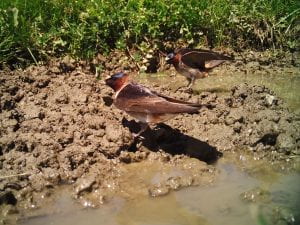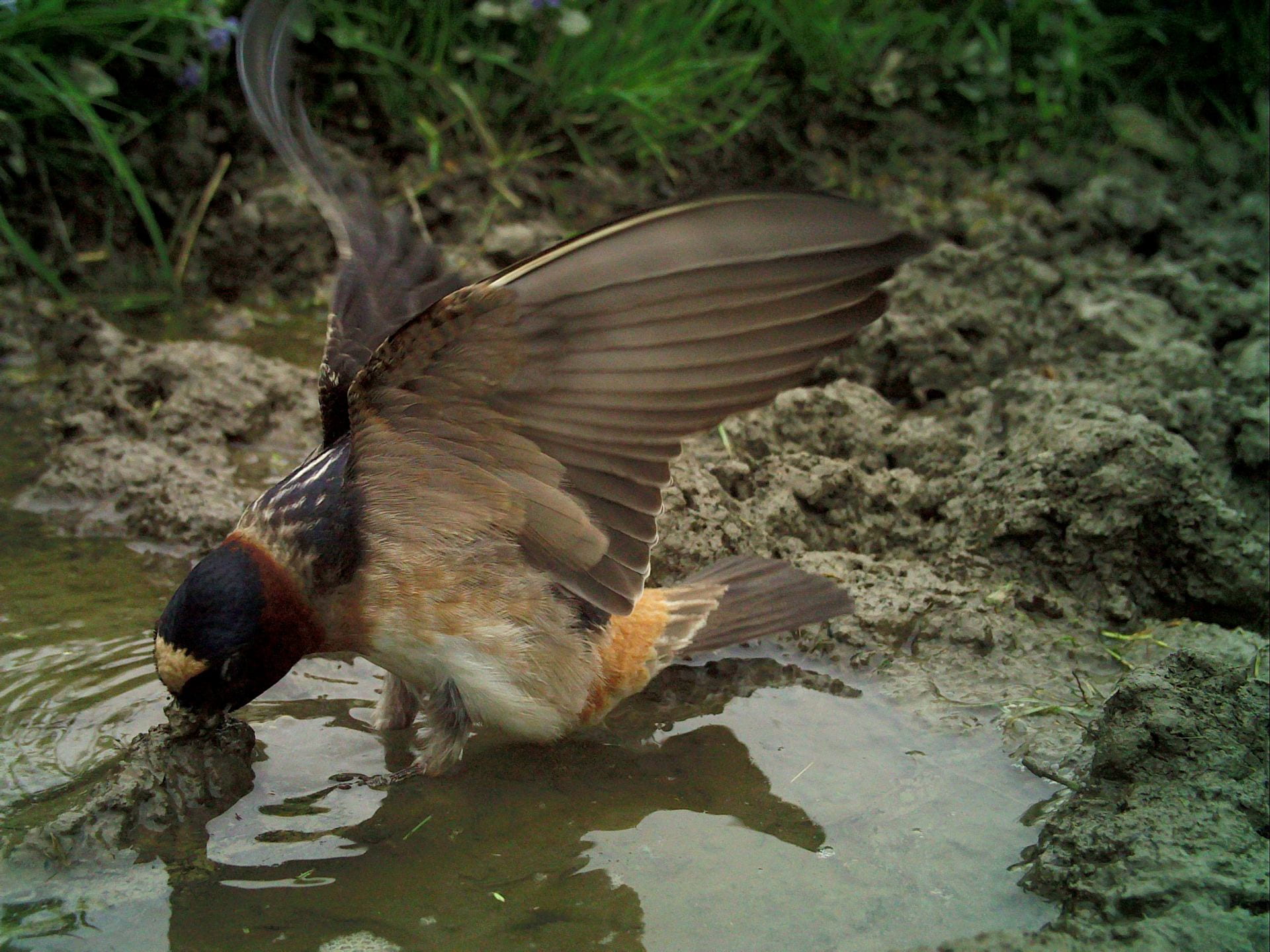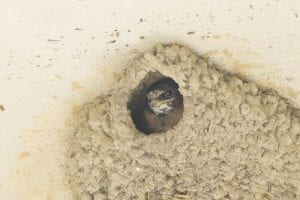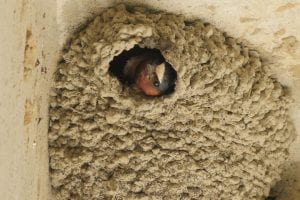

 2020 was an interesting season here at BCC for the Cliff Swallows. We had a lot of moving parts affecting our colony this nesting season.
2020 was an interesting season here at BCC for the Cliff Swallows. We had a lot of moving parts affecting our colony this nesting season.Let’s begin with the good stuff
We had a total of 16 occupied nests this nesting season. Of the 16 nests that were occupied, 11 of them had successfully fledged chicks, That’s 6 more occupied nests and 2 more nesting successes than we had last year!
The broods on average were smaller this year than last. Most of the nests had two chicks in them this time around. I observed only one nest this season that had 3. (I’ve seen as many as 4 chicks to a nest fledge successfully)
The Unusual Stuff
The unusual observation was that out of the 22 nests that were available for cliff swallows use on campus, 5 of them, which didn’t reproduce, seemed to have functioned as “She Sheds and Man Caves”. I can’t tell the difference between the males and females of this species, so I like to think my cliff swallow kindred are non binary. Anyway, prior to this season, it was my understanding that once a cliff swallow was usurped from a nest by house sparrows (which also happened to 4 of the nests), The birds would leave the colony, and some of them did. However at least 10 non breeding adults stuck around in their “little sanctuaries” until around the weekend of July 3-4 which was the time when most of the nests of the colony fledged. I can only speculate the possibilities. One possibility which immediately comes to mind is power in numbers. Perhaps the stress of rearing chicks in regard to the with the house sparrows, who can and are particularly fierce to the cliff swallows, tree swallows and bluebirds; perhaps the non breeding adults may have stuck around the colony to safeguard the well being of those that were able to raise young. (I’m really reaching here, but sure,why not?)
The Stress Factors
One of the stress factors this season was most definitely, the house sparrows. We lost 4 cliff swallow nests to them this year as previously mentioned. The cliff swallows that successfully reproduced and fledged young, were very covert in their comings and goings from their nests. The young were unusually quiet and stayed well hidden most of the time. This was a stark contrast to what I had observed without house sparrow competition. For example, last year at BCC, for some reason, perhaps due in part to the late season nesting, (The cliff swallows made their arrival at BCC On or about July 8, 2019). Last year, the house sparrows didn’t bother the cliff swallows at all. With the exception of 2 rather covert nesters, the rest of the 2019 colony were rather gregarious.
Another stress factor for this year were the swallow bugs, which are ectoparisites that were present in many of the nests. This was affecting other colonies as well. The heaviest infestations I saw for this year was at a cliff swallow colony, located at a farm in Richmond, and a colony under the Glendale bridge. The colonies under New Lenox road bridge and Bard College were also infested within the parameters one would expect to see at a typical cliff swallow colony. Swallow bugs tend to go with cliff swallows. The cliff swallow nesting season for 2020 generally was pretty stressful across the board. The exception to this is the colony in Rowe, MA. For starters, there are no house sparrows anywhere near the Rowe colony. Secondly, the colony was utilizing exclusively artificial nesting, because the natural nesting materials available in the area have a very high failure rate, because of its sandy composition.
For a final sampling of eye candy is one of the nestlings in the H4 nest that fledged yesterday and M5 which shows an irate adult cliff swallow glaring at me while making repairs to its nest. the
I believe for next cliff swallow nesting season, I’ll need a deeper understanding of the life history of house sparrow and the swallow bug.
Chau for now


